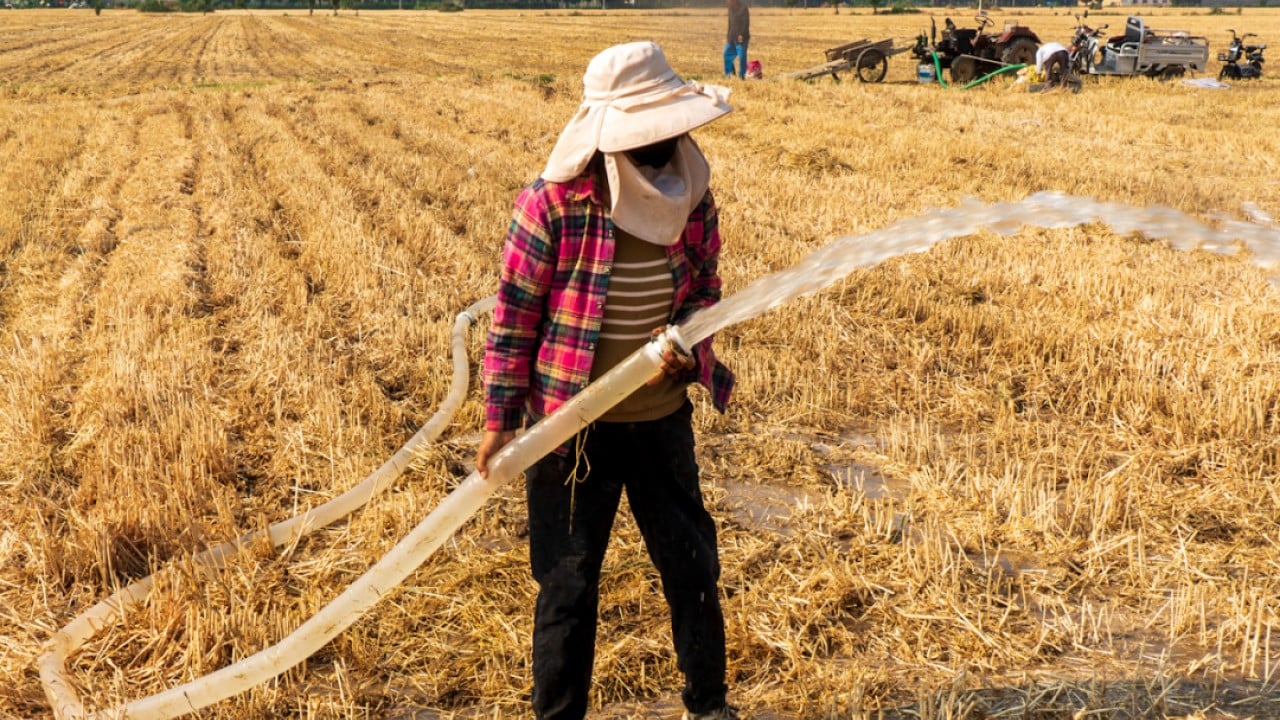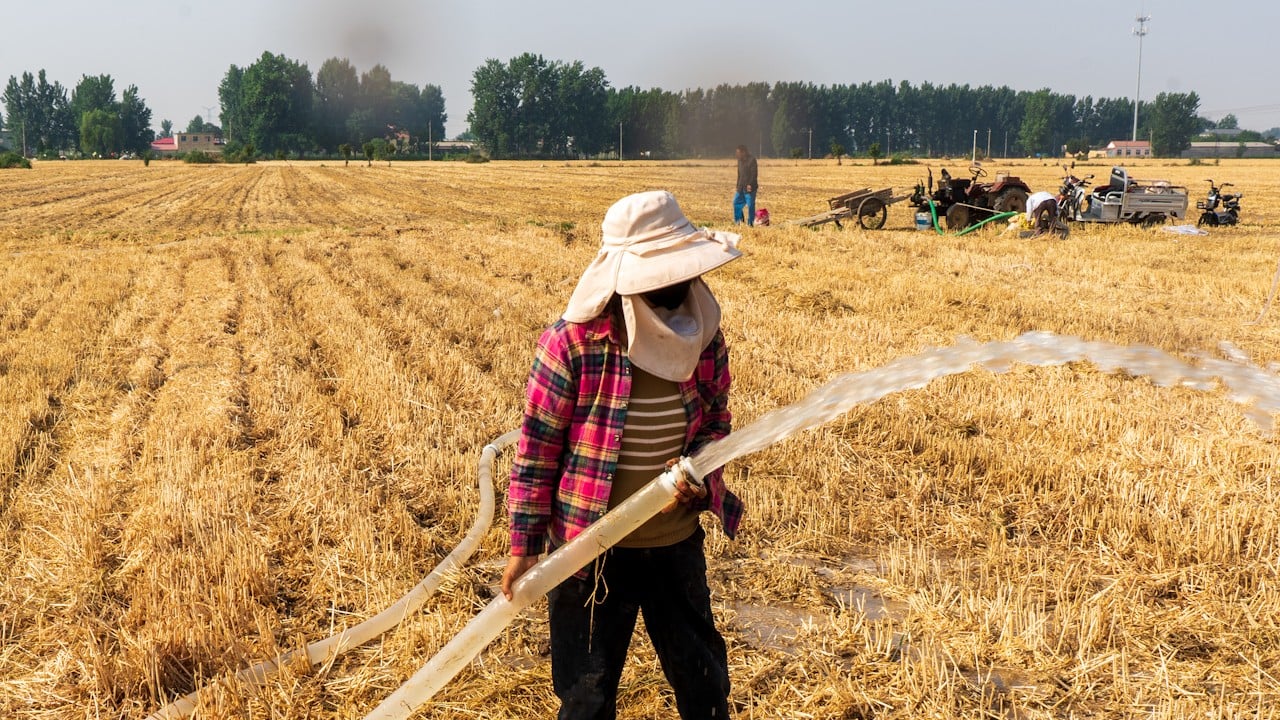Several parts of China are struggling with the impact of extreme weather, bringing severe flooding to southern areas, while further north drought is taking a severe toll on agriculture.
The central province of Henan, along with Shandong to the east, has seen little rainfall since April and that, along with high temperatures, is causing water shortages that affect both agriculture and household use.
The local meteorological department predicts no significant rainfall in Henan until at least Friday exacerbating the problem at a crucial time in the summer planting season.
Henan is a major grain-producing area and, according to state broadcaster CCTV last week, the drought has prevented the planting of at least 1.3 million hectares (3.2 million acres) of farmland in Henan, accounting for 3.5 per cent of the area’s summer planting area.
The municipal agricultural bureau in the provincial capital Zhengzhou activated a level-four agricultural drought emergency response last Thursday, the lowest in a four-tier system, and then raised it to level three the following day.
“The timing is critical as the drought coincides with the planting season, a period when crops are heavily reliant on water. Insufficient soil moisture can hinder seed germination, while delayed planting could shorten the growth period and reduce crop yields,” a local farmer told South Reviews magazine.
Farmers are desperately sourcing water to irrigate their fields under the scorching sun, with people queuing up to use the limited wells.
“There are about 40 wells in my village, which serve 2,900 acres of farmland. Each well can accommodate only one or two households at a time and irrigating two acres of farmland takes about 15 hours,” Liu He, a sociologist conducting fieldwork in a local village, told the magazine.
“Additionally, the irrigation process requires frequent relocation of water pipes every three to four hours, forcing farmers to continuously monitor their fields. One local family, with only two elderly individuals in their seventies, has had to live in the field for three consecutive days and nights to manage irrigation.”
“This year’s drought is notably severe, probably the strongest in the past decade.” A farmer from Shangqiu City complained on Weibo.
At least 14 cities in Henan have activated emergency drought responses so far, opening irrigation gates to safeguard crops, while the city of Zhumadian has urged residents to save water and stagger useage.
But further south, heavy rainfall has caused a series of floods across several provinces.
The Ministry of Water Resources initiated a level-four flood defence emergency response in the provinces of Guangxi, Guizhou, and Yunnan on Friday, while the authorities in Fujian raised their response to level three. On Saturday Guangdong also issued a level-four response.

Guangdong has already recorded serious flooding this year, with the Bei River recording a 50-year high in April, disrupting at least 110,000 residents.
The Xi River in Guangxi region, a major tributary of the Pearl River, reported its first major flood of the year on Saturday, prompting the authorities to prepare upstream reservoirs to intercept floods and empty the downstream reservoirs in advance.
The local hydrological department warned that in the next couple of days, water levels in the lower and middle sections of the river may rise by between two and five metres (6.5-16.4ft).
Further east, passenger trains were suspended on four railway lines in Jiangxi and Fujian on Saturday, with services not scheduled to resume until Wednesday.
“This prolonged and intense rainfall is a result of a clash between cold and warm air streams. It poses a high risk of triggering floods in small and medium rivers, urban and rural waterlogging, landslides, and other secondary disasters,” Huang Zhigang, from Fujian’s meteorological bureau, told state news agency Xinhua.



